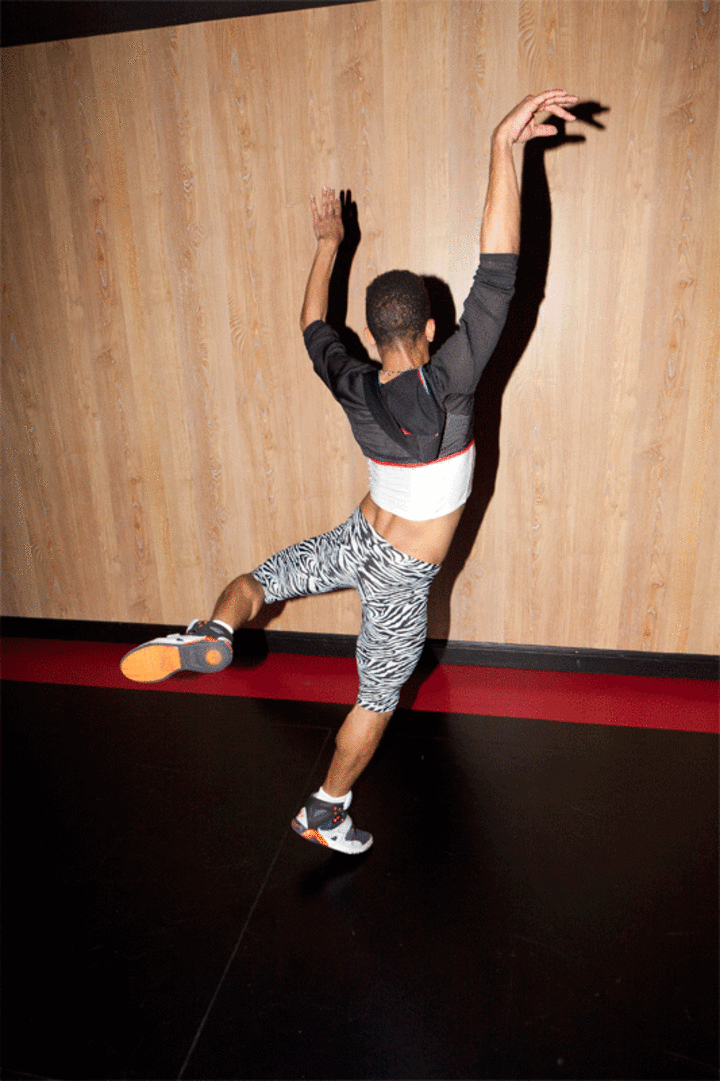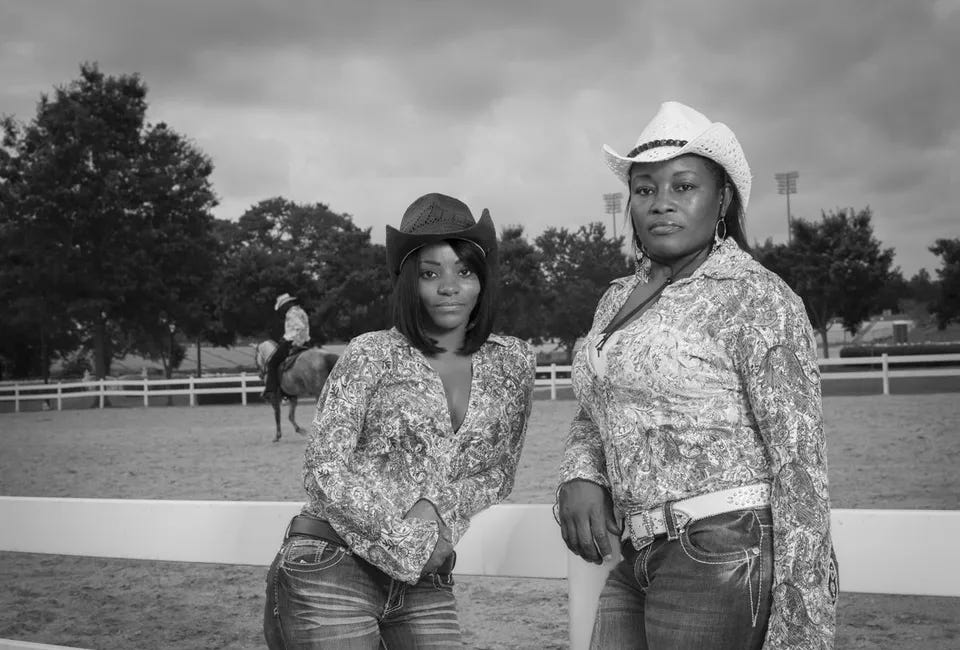How the Ballroom and House Culture of the Black LGBTQ+ Community Revolutionized the World
Spotlight Stories - Visual Archive
Ballroom and house culture, birthed by the Black LGBTQ+ community in the United States, has left an indelible mark on global culture, particularly in dance, fashion, and self-expression. Emerging as a sanctuary for marginalized individuals, this vibrant movement created a space for resilience, creativity, and celebration of identity. While mainstream media has drawn inspiration—and profited immensely—from ballroom and house culture, it has often failed to adequately protect or support the community that birthed it. To fully appreciate the influence of this culture, we must explore its history, its impact on the world, and the critical importance of honoring and supporting the Black LGBTQ+ pioneers who shaped it.
Ballroom culture traces its roots back to the Harlem Renaissance of the early 20th century, but it truly began to flourish in the 1960s and 1970s. During this era, Black and Latinx LGBTQ+ individuals were often excluded from white-dominated drag competitions. In response, they created their own ballroom scenes, hosting competitions where they could express themselves freely and authentically. These events, known as balls, became places where participants could walk (compete) in various categories ranging from fashion and performance to “realness,” a category emphasizing the ability to blend into cisgender, heterosexual society.
Central to the ballroom scene was the concept of "houses." These houses were chosen families led by "mothers" or "fathers" who provided mentorship, support, and guidance to members, often referred to as "children." These familial bonds were vital in a world where LGBTQ+ individuals, particularly people of color, were frequently ostracized by their biological families and society at large. Legendary houses such as the House of LaBeija, House of Xtravaganza, and House of Ninja played a pivotal role in shaping ballroom culture, providing safe spaces for creativity, self-expression, and solidarity.
One of ballroom culture's most significant contributions is its influence on dance. Voguing, a dance style originating in the 1980s, remains one of the most recognizable legacies of the ballroom scene. Inspired by the poses of models in fashion magazines like Vogue, voguing evolved into a dynamic dance form that includes angular movements, intricate hand gestures, floorwork, and dramatic spins.
Voguing emerged as a form of resistance and empowerment. For many Black and Latinx LGBTQ+ individuals, whose identities were often dismissed or denigrated, voguing was a way to reclaim their power, express their stories, and demand visibility. Competitors on the ballroom floor would vogue with intensity, turning dance into a battle, a narrative, and a declaration of self-worth.
Beyond the ballroom scene, voguing became a global phenomenon. Madonna’s 1990 hit song "Vogue" brought the dance style into the mainstream, but it was largely inspired by and indebted to Black and Latinx dancers from the ballroom scene. While Madonna's success helped popularize voguing, it also highlighted the frequent erasure of the originators of these cultural movements.
The world continues to draw heavily from ballroom and house culture, particularly in the realms of fashion, music, and television. Phrases like "shade," "realness," and "slay," which originated in the ballroom community, are now ubiquitous in pop culture. Iconic artists such as Beyoncé, Rihanna, and Lady Gaga have incorporated voguing and ballroom-inspired aesthetics into their music videos and performances. Shows like RuPaul’s Drag Race and Pose have brought ballroom culture to a wider audience, with Pose in particular offering a heartfelt portrayal of the lives and struggles of ballroom participants in the 1980s and 1990s.
While this visibility has helped shine a light on the culture, it has also raised questions about appropriation. Many mainstream platforms profit from the artistry and language of ballroom culture without adequately crediting or supporting the Black and Latinx LGBTQ+ individuals who originated it. This erasure perpetuates a cycle where marginalized communities create revolutionary art forms, only to see their contributions co-opted and commodified by those outside the community.
Additionally, the broader LGBTQ+ movement has often failed to prioritize the needs of its most vulnerable members—particularly Black trans women and queer people of color, who remain the driving forces behind ballroom culture. Despite the global embrace of ballroom aesthetics, the Black LGBTQ+ community continues to face systemic racism, transphobia, and economic inequality. The stark contrast between the mainstream celebration of ballroom-inspired art and the ongoing struggles of its originators underscores the need for meaningful support and advocacy.
Supporting ballroom culture goes beyond celebrating its aesthetics; it requires active engagement with and investment in the community. This means amplifying the voices of Black and Latinx LGBTQ+ individuals, creating opportunities for them to lead and profit from their artistry, and addressing the systemic issues they face.
Here are a few ways to meaningfully support the ballroom community:
Highlight the Originators: Whether through documentaries, interviews, or collaborations, it’s crucial to center the pioneers and current leaders of ballroom culture. Films like Paris is Burning and shows like Legendary have provided valuable platforms, but more work remains to ensure these narratives are told authentically.
Invest in LGBTQ+ Organizations: Many organizations work tirelessly to support Black and Latinx LGBTQ+ individuals, providing services like housing, healthcare, and mentorship. Examples include the Audre Lorde Project, House Lives Matter, and the Sylvia Rivera Law Project.
Combat Erasure: When celebrating ballroom-inspired art or language, acknowledge its origins. This simple act of recognition helps combat the cultural erasure that has long plagued marginalized communities.
Advocate for Policy Changes: Structural inequalities continue to harm the Black LGBTQ+ community. Advocacy for policies addressing housing discrimination, healthcare access, and protection against violence is essential.
Create Inclusive Platforms: Whether in media, fashion, or entertainment, industry leaders should actively create spaces where Black LGBTQ+ voices are elevated, celebrated, and compensated fairly.


The legacy of ballroom and house culture is one of resilience, innovation, and unapologetic self-expression. From its origins in Harlem to its influence on global fashion and dance, this movement has revolutionized the way we think about art, identity, and community. Its contributions remind us of the power of marginalized voices to reshape the world.
Yet, as we celebrate the impact of ballroom culture, we must also reckon with the ongoing struggles faced by the Black LGBTQ+ community. True appreciation requires more than imitation; it demands solidarity, advocacy, and a commitment to justice. By honoring and supporting the ballroom pioneers and their descendants, we can ensure that this revolutionary culture continues to thrive—and inspire—for generations to come.
Join the Celebration: Share Your Ballroom Images and Get Ready for The Blkuem Con!
Ballroom culture is all about expression, creativity, and community—and now it’s your turn to share your story! We’d love to see how ballroom inspires you. Send us your favorite ballroom-inspired images, whether it’s your fiercest runway look, your most dramatic pose, or a heartfelt moment from a ball. Tag us on social media or email your photos to realmempireindustries@gmail.com, and let’s celebrate this incredible culture together!
And don’t forget to mark your calendars for The Blkuem Con! This one-of-a-kind event will bring ballroom, house culture, and Black LGBTQ+ artistry to the forefront like never before. Get ready for jaw-dropping performances, panel discussions with legends, and a space where creativity knows no bounds.
Let’s uplift the legacy, honor the pioneers, and continue to slay the future—together!
The Impact of Black Cowboys and Cowgirls: Pioneers of the American West
The story of Black cowboys and cowgirls is an essential, though often overlooked, chapter in American history. They were pioneers, cattle wranglers, and freedom-seekers who helped shape the American West and contribute to the country's cultural fabric. Their history began during the westward expansion and continues to have a lasting impact on American s…









